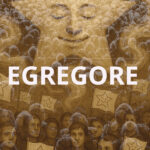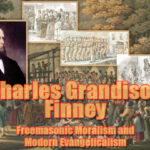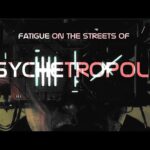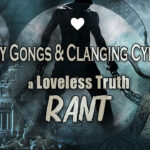Yvonne Nachtigal | Christian Observer
Books about near death experiences (NDE’s) as well as their spin off movies and television interviews are enjoying much popularity. This seems like an innocuous enough trend, but it is actually one that should be held to much more scrutiny than it is receiving. While NDE’s do provide evidence of the existence of the supernatural, the messages that a great majority of them are bringing presents a very particular religious worldview. The increased interest in NDEs is representative of a rising interest in occult spirituality, particularly since the 60’s, and that they are of distinct importance because they draw the interest of people who normally would have no attraction to the occult.
The term “near death experience”, was coined by Psychologist, Philosopher, Raymond Moody, author of the 1975 book Life After Life, but it is actually a misleading term, since not all people reporting these and similar experiences are near clinical death.
My own near death experience occurred during brain surgery in 2011. Finding myself suddenly awake and in a place that was foreign and vastly different from anything I’d ever seen, I surmised that I must have died and that this was the next place. The realm I found myself in was more real than anything I’d previously known as reality. It was not an ethereal place. It had substance. In that place, life in the natural world appeared to be brief, temporary, and yet an essential journey. I instinctively knew that this was a truer state of being; that this reality had always existed but that I’d only been aware of it on a subconscious level. The atmosphere there was love, as though love was an actual substance. The love brought an immense rest and peace that I realized I’d longed for all my life. In my NDE I was being held by a giant light-being which I understood to be an angel, and whose substance was so completely foreign to me that I struggle to find words to describe him. The word that comes closest is “glorious”. He was solid, made of something that didn’t consist of particles and he emitted light. The closest material I can compare him with is liquid gold or amber. He spoke twice during the experience or “vision” which I now believe it was. His words were “The multitude is petitioning for you.” And “The petition is granted,” after which I woke up in the recovery room.
My view of life was profoundly changed by the experience. I no longer fear death, have an insatiable curiosity to find the underlying truth in things and tend to make decisions based on spiritual value. I have an easier time adjusting to changes in schedule or plans. I feel very close to God and sometimes intuitively know things that others don’t. I struggle to put insights I’ve come away with into words and generally end up going into more detail than people have interest in. At times it seems like there’s simply no vocabulary. Other NDEers have referred to feeling as though they have “galaxies of disconnected thought” which I surely can relate to. Partly as a result of this, I find it harder to make new friends and maintain friendships. Life changes like these and others are commonly expressed by NDEers. And like other NDEers, I absolutely believed that what I had experienced was profound spiritual truth. In spite of the dangers I see today with relying on NDE’s for spiritual truth, I still do believe the place I visited was real.
NDEers’ commonly encounter bright, light emitting, entities and report being surrounded by unspeakable love. Many report a tunnel with light at the end drawing them toward it. (I did not.) Thoughts are lucid, vision and hearing are heightened, and there is a great sense that one understands the true meaning of existence. But can these experiences be relied upon to reveal spiritual truth? Sadly, no. NDEs are typically interpreted through the existing religious belief of the experiencer; Christians tend to see angels, loved ones and heaven; some report seeing things that are terrifying and hellish; Muslims see Allah, Hindus see Krishna, etc. But significant to this topic; a vast majority return from “heaven” with messages that alter their previously accepted beliefs toward a decidedly mystical one.
“Naturalism” refers to a belief originated by naturalist philosophers in the early 1900’s, whose intent it was to draw a closer connection between science and philosophy (Papineau). Naturalistic science maintains that nature is all that there is to reality, demoting the supernatural to mere superstition. This belief is at the core of secular, humanistic philosophy, holding to the theory of evolution. Naturalism teaches that the natural world maintains itself through its own inner dynamics without any outside, divine influence or control. Although naturalism is the prevalent belief in our culture, likely since it fails to answers existential questions of origin and meaning, most people hold to some sort of belief in a transcendent spirituality (Prado).
In spite of multiple strong, evidential cases like this, naturalistic scientists continue to cling to the idea that NDEs occur in the brain, and have responded with various theories and the case studies to prove them, but evidence of near death experiences, as well as those of extrasensory perception and psychic phenomenon serves to contradict the premise that “we are our brain”.
Neurosurgeon, Dr. Eben Alexander wrote about his own NDE in his best-selling book, Proof of Heaven. Before his experience, Alexander held a materialist reductionist worldview but his NDE dramatically altered that. In the book, he boldly asserts that science will prove that heaven exists. He foresees a rise in “consciousness” (referring to awareness of the spiritual state experienced by NDEers) and a more “enlightened” world forcing science to abandon reductive materialism. Alexander’s view is representative of other prominent NDEers and NDE researchers, notably, P.M.H. Atwater, Peter & Elizabeth Fenwick, Bruce Greyson, Elisabeth Kubler Ross and Pim van Lommel. These NDE researchers, most of whom are NDEers themselves, all adhere to a mystical/occult/oneist worldview. There are a few stragglers who offer a slant on the biblical worldview such as Howard Pitman, a purported Christian, who, in his many books, claims he has visited the spiritual realm several times and been shown the rank and order of demons as well as details of their operations. These details are given nowhere in scripture, and thus would necessarily be prophetic insights, but they don’t line up with the qualifications required of biblical prophecy. There is Howard Storm, author of the book My Descent Into Death, who allegedly converted to Christianity as a result of his NDE. But the views he holds are very legalistic. There are NDE’s that present what is generally accepted as a sound biblical view, but few of these are popularized. Colton Burpo’s Heaven Is For Real which has recently been made into a movie, while allegedly presenting a biblical worldview, also portrays the common NDE message of “Everyone has a good afterlife” and “there is no judgment”. Joe Piper’s 90 Minutes In Heaven is probably the account recorded in book form which is most closely aligned to biblical Christianity as his account does not include the common NDE messages or a preoccupation with demons.
Skeptics remain on both the secular as well as the religious sides of the NDE argument. In his book about the evidence for extraordinary psychic abilities Dean Radin writes that:
“On the religious side, within the Judeo-Christian-Islamic traditions, only God… is allowed to perform miracles. Ordinary folks who perform such feats are considered suspect (by theists) if they’re lucky and heretical if they’re not. And on the scientific side, there is a widely held…assumption that these phenomena cannot exist because they violate one or more scientific principles” (Radin).
NDEs can certainly hold their own under the scrutiny of naturalistic science, but what’s far more important is the reliability of the spiritual “truth” they bring and how readily they are being accepted as answers to questions about the afterlife. While NDEs tend to be interpreted in the vocabulary of the religion of the experiencer, the common messages they present, such as, “death is good”, “everyone has a good afterlife”, and “there is no judgment”, are worrisome as they sweep away any notion of evil, sin or accountability for ill-inspired action in this world and largely present one very particular religious view known as pantheistic monism, or oneism; the view of “oneness” or “singularity”, that God is one and the same as the cosmos, all reality being a manifestation of God. Oneism holds that nothing outside of God exists; and rejects the idea of a God who is independent from his creation.
Pantheism, the belief that all nature is one and the same thing as God, has been criticized by German philosopher Arthur Schopenhauer as merely a “euphemism for atheism” (Mander). He further states that “to call the world God is not to explain it; it is only to enrich our language with a superfluous synonym for the word world,” . In his book, “The God Delusion”, quantum physicist Richard Dawkins complains that “Pantheism is sexed-up Atheism” (Mander).
Dutch philosopher Baruch Spinoza is credited with introducing the idea of pantheistic monism (oneism) to modern philosophy. In his article “Pantheism”, Stanford’s William Mander says that:
“Spinoza’s ideas were highly respected by secular scientists, like Albert Einstein. Kabbalists, Talmudists and Midrashic tradition supports the idea of pantheistic monism as well” (Mander).
Popular in Eastern religions is the pantheistic monist or oneist view. Those who hold to the various ideas representative of “New Age” thought, hold that our truest state is that of “oneness”. New Age practices, serving to attain “consciousness” of this reality, involve the use of various techniques such as chanting, meditation and even entheogens such as ayahuasca or psilocybin to mystically experience this oneness with God (Miller).
Within the confines of pantheistic monism there is no room for evil, and the concept of self is merely an illusion. Pantheistic monism asserts that we will be absorbed into the “great one whole” and cease to exist. This view diminishes the value of people as unique individuals, instead viewing human life as meaningless and trivial, since it will ultimately be forgotten. This idea lines up directly with the common messages of NDEs; “Death is good”, “everyone has a good afterlife”, “there is no judgment”, which flies in the face of human experience and the problem of evil. If everything is God, and if God is good, then there is no explanation for the existence of evil, which common experience tells us exists. In contrast, the biblical worldview, which, I personally find to provide the most satisfying answer to the problem of evil, maintains that God the creator is distinct from his creation and that every human life holds great value (English Standard Bible, Gen 1.1, Jn 1.1, Rom 1.18.).
Prevalence of this view in our world today is seen in an almost ubiquitous trend toward New Age/Eastern mystical thought and a worldwide rise in occultism. In light of this trend, Professor of Psychology Barry Singer and Visiting Associate Professor at CSU Victor A. Benassi insist that both a scientific and social understanding of occult beliefs is very important. Although written in 1981, their report is more relevant today than ever:
“Occult beliefs have increased dramatically in the United States during the last two decades (Freedland 1972; Godwin 1972). Far from being a “fad,” preoccupation with the occult now forms a pervasive part of our culture” (Singer Benassi).
Their report cites studies revealing an unprecedented 80-90% of the population believing in ESP.
“[I]n one survey it ranked as our most popular supernatural belief, edging out belief in God in strength and prevalence (Wuthnow – 1978)… Ouija boards overtook Monopoly as the nations’ best-selling board game in 1967” (Singer Benassi)
The New Age Movement is a diverse set of organizations which operate in the economic, political, and religious arenas which have significant influence in almost every area of our culture. Dr. Carl A Raschke calls the New Age Movement “the most powerful social force in the world today”, contending that “it is as much a political, as a religious movement, influencing business management theory and many other areas.” In an article in the New York Times, Robert Lindsey writes that “Representatives of some of the nation’s largest corporations, including IBM, AT&T, and GENERAL MOTORS met in New Mexico to discuss how meta-physics, the occult, and Hindu mysticism might help executives compete in the world market place” (Lindsay). And according to New Age Philosopher William Irwin Thompson “We have now a new spirituality, what has been called the New Age movement. The planetization of the esoteric has been going on for some time… This is now beginning to influence concepts of politics and community in ecology… This is the Gaia [Mother Earth] politique… planetary culture.” (Jasper 222)
Research associate Douglas R. Groothuis describes six distinctive traits of New Age thought which exemplify pantheistic monism and NDEs:
“All is one; All is God; Humanity is God; A change in consciousness; All religions are one; Cosmic evolutionary optimism”
Mystical Kabbalah also teaches this school of thought: In the words of Jewish mystical philosopher, Moses Cordovero:
“Do not say ‘This is a stone and not God.’ God forbid! Rather, all existence is God, and the stone is a thing pervaded by divinity” (Cordovero).
This Kabbalist notion of God is virtually identical with the pantheistic monism taught later by Spinoza. This is significant since it connects pantheistic monism with the ancient teachings of magic which were forbidden in Judaism. Historian David Livingstone in his book “Plato and Kabbalah” writes that:
“[H]aving rejected the Jewish God, their secret interpretation involved reverence for his enemy, the dying-god of ancient fertility rites. The dying-god was associated with the Underworld … the dying-god and the goddess were interpreted to represent dual aspects of a single androgynous deity. Therefore, both came to be symbolized by the planet Venus, whose original Latin name was Lucifer” (Livingston).
Many New Age teachers exalt Luciferianism, noteably David Spangler, who writes:
“Lucifer comes to give to us the final gift of wholeness. If we accept it then he is free and we are free. This is the Luciferic initiation. It is one that many people now, and in the days ahead, will be facing, for it is an initiation in the New Age” (Spangler).
Whether we want to acknowledge religion and spirituality or not; many, if not all political ideologies are based upon religious beliefs, including the belief of atheism, as in the case of communism. The current plan to bring the world under one global government, The New World Order, is no exception. While these ideologies profess tolerance, that tolerance excludes belief in a separate creator God, insisting on agreement with the philosophy of “oneism”. In the words of Jonathan Stone:
“The distinguishing unifying characteristic of the World Order will be the belief that ‘all substances, all beings are one.” (Stone)
The danger of relying upon NDE’s for spiritual truth is subtle indoctrination into this worldview.
Leafing through one of the books on NDEs, written by a “Christian” while standing in line recently, my heart sank as I once again read the all too familiar messages; “Death is good”, “Everyone has a great afterlife”, as well as another common one; “Physical reality is only a “hologram””. Even some Christian teachers today erroneously believe that “dimensions” are actually the spiritual realm, when the “dimensions” purported by modern physics bear a striking resemblance to Plato’s “Forms”, a term also used by Theosophist Alice Bailey or Kabballah’s 11 Sefirot.
The rise in occultism and naive acceptance by Christians of theoretical science’ claims or their occult origins can be seen as a predictable reaction against the current naturalistic empirical scientific worldview which utterly excludes the subjective, whole experience of human life. While naturalistic science has made great strides in the advancement of medicine, dispelling much superstition about disease, making it understandable that people today, including Christians, tend to think naturalistically. The unfortunate result has been that the church, or the Christian religion, has followed the trend of secular science and neglected the supernatural. This vacuum has provided fertile ground for occult thought in religious and scientific arenas. But we would be hasty to embrace the idea that theoretical, quantum physics is a sign that science is “catching up” and acknowledging the supernatural. Christians would do well to take exception to the view of former astronaut and IONS founder Edgar Mitchell, who states that:
“There are no unnatural or supernatural phenomena, only very large gaps in our knowledge of what is natural.”
Mitchell’s view is a form of monism, known as “promissory naturalism”, which promises a future natural explanation for what is now unknown.
The supernatural is just that; supernatural. The meaning of supernatural being: “above nature”. It is defined as:“1) Of or relating to an order of existence beyond the visible observable universe; especially: of or relating to God or a god, demigod, spirit, or devil.
2) a: departing from what is usual or normal especially so as to appear to transcend the laws of nature: b: attributed to an invisible agent (as a ghost or spirit).” (Dictionary)
By this definition, the supernatural is a realm that science can never traverse. To accept the “dimensions” offered by theoretical science as one and the same as the supernatural world is to err. The danger of this mistake is to interpret what is experienced in the supernatural realm in light of occult relativism or oneism. In the words of the late researcher, Cris Putnam:
“All is not one; there is a transcendent Other.”
That being said, there are renowned theologians who support the premise of the near death experience, for instance R.C. Sproul, who has written:
“Too many of these experiences have been reported for us to simply dismiss them as imaginary or hoaxes” (Sproul).
It is crucial to understand that NDEs are not resurrections, as their unfortunate title suggests, and as many “Beyond and Back” stories would lead us to believe. Nor is there an “in between” state where people can pop into and out of heaven (at their own choosing). Biblical scripture asserts that:
“… it is appointed for man to die once, and after that comes judgment” (Bible, Heb. 9.27-28).
Those who practice astral projection (the soul traveling apart from the body) report seeing a “silver cord” which connects them to their body, something which is referred to in scripture as being intact until the person dies. Even most occultists would agree that once a person dies, this cannot be reconnected (outside of a divine miracle, as in the case of the resurrection of Jesus Christ or Lazarus from the dead). The writer of Ecclesiastes mentions the silver cord:
“[Remember God] before the silver cord be loosed…” (King James Bible, Ecc. 12.6).
This verse is interesting in light of the biblical story of Jesus” raising Talitha, the little girl from the dead. Jesus said that she was not dead, but “merely sleeping” (King James Bible, Mt 9.24).
Many are relying on NDE testimonials from “beyond the grave” to reveal spiritual truth and provide evidence of the afterlife, when in fact the vast majority of them are serving to normalize occult spirituality. Appealing to those who would normally take no interest in the occult, NDEs blur the lines between scientific, biblical and occult views.
People long to know what lies beyond the grave. They want answers to life’s deeper questions, questions that religions profess to answer: Who are we? Where are we? Why are we here? What is the answer? There is a spiritual realm where the soul can exist for a time apart from the body, which throughout history, shamans, magicians and occultists have attempted to enter through various practices, including the use of drugs, but this practice is called “sorcery” in the bible and is strictly forbidden. It is my opinion that this is not because the spiritual realm itself is evil, but because we can be very vulnerable to deception there. There are several biblical accounts of people visiting the spiritual realm. In one such account, after having been stoned in Lystra, the apostle Paul writes:
“And I know that this man was caught up into paradise—whether in the body or out of the body I do not know, God knows— “ (ESV Bible. 2 Cor.12.3)
We are told warned by the apostle John:“Beloved, do not believe every spirit, but test the spirits to see whether they are from God.” (ESV Bible 1 Jn 4:1)
The pervasive themes and profoundly religious nature of NDEs warrant further investigation. Amoral rationalism; the belief being presented by most NDEs that there is no absolute right or wrong and that truth is relative to the individual or culture is the trademark belief of the occult. Dark occultist Aleister Crowley”s words “Do as thou wilt” is the mantra of anarchism which is the logical end of spiritual rationalism. Those who adhere to one of the many schools of thought which comprise New Age spirituality may protest the comparison, insisting on a distinction between “Satan” and “Lucifer”, “light occult” spirituality typically presented by NDEs do not promote anarchism, we are seeing an unprecedented rise in our society of immorality, chaos and violence the timing of which correlates with the rise in occult spirituality. With the breakdown of morality, we are seeing the breakdown of the family unit. More and more children are being raised in single family homes by parents who are either divorced or were never married, working twice as hard to keep a roof over their heads. Promiscuity is now portrayed as normal on television and alternate sexual lifestyles are disproportionately represented.
History reveals that the fall of great civilizations is accomplished by internal erosion (rather than external invasion). The deterioration of sexual morality has played a common role in the downfall of civilizations. This should compel us to consider the stated goal of the leaders of the New Age Movement, who believe that their planned shift in consciousness will occur only when a collapse of empiricism and any religions professing a separate, creative God, ie. Christianity, Judaism and Islam, leads to desperation for a (their) new (spiritual) leader. Their plan is for a global, spiritual utopia that will replace the current naturalistic scientific worldview as well as all nationalism. In a pamphlet titled “The New Group of World Servers” printed by Lucis Trust and distributed by a group calling itself “World Goodwill”, is written the following:
“Humanity is not following a haphazard or uncharted course –there is a Plan….a spiritual Hierarchy of the planet…a synthetic unity… [The leaders will] provide the vision and mould public opinion. Behind these leaders and co-operating men of goodwill are the Custodians of the Plan, the inner spiritual Government of the Planet” – (Jaspar 216).
Messages being brought back by NDEers must be considered in light of the rise in occultism today. Hard questions must be asked of them. If the biblical worldview is correct, then Christians need to be aware that NDEs are playing a significant role in a time of great deception.
NDEs, including my own, have brought experiencers miraculous revelation and hope. But while miracles throughout scripture serve the distinct purpose of in some way bringing glory to God, always to the ends of drawing people closer to their creator who loves them and values their uniqueness, the majority of NDEs are instead promoting occult mysticism (pantheistic monism). As disappointing as it might be to devotees of the “religion of the resuscitated” (Groothius), people are not visiting heaven. Although these experiences do provide evidence that the soul can exist for a time apart from the body, this spiritual realm is the realm in which the occult has operated since the beginning of time. I do not think there is anything innately evil about the spiritual realm but that Christians should be aware and discerning of the messages being brought through NDE’s. A rise in Christian awareness in these times is essential if we want to avoid deception and protect others from deception and detrimental consequences. Awareness needs to be brought to several fronts:
- Awareness that NDE’s cannot be relied upon to provide spiritual truth.
- Awareness of the occult and its history.
- Awareness of common messages brought by NDE’s in light of the occult.
- Awareness of the current rise in occultism both outside and inside the organized church.
- Awareness of the effect that suppression of the supernatural has had on Christians and society at large.
- Awareness that there is a very real agenda to bring about a communist-styled political/ /economic/religious world government which is being led by people who adhere to the same beliefs as those that are being presented by prominent NDE’s.
Many NDEs have produced profound, positive life changes, but the fact remains that until actual death, the disembodied soul is still in this world. And as such, it is still subject to the same deceptions as it is when housed in the body.
Works Cited:Aaen-Stockdale, Craig. “Neuroscience For The Soul.” nd. The Psychologist. Web. 26 March 2017.
Alexander, Eben. Proof of Heaven. New York: Simon, 2012. Print.
Barry Singer, Victor A. Benassi. “Occult Beliefs.” American Scientist (1981): 49-55. Web.
Beauregard, Mario. Brain Wars. New York: Harper, 2012. Print.
Blackmore, Susan. “Near Death Experiences Do Not Prove Life After Death. Is There Life After Death?” Skeptical Inquirer Fall 1991: 34-45. Web-Gale.
Clark, Kimberly. Clinical Interventions with Near-Death-Experiencers: Problems, Prospects, Perspectives. Springfield: Thomas, 1984. Print.
Cordovona, Moses. “Rabbi Moses Cordovero, Mystic Sage of Kabbalah.” 2006. Enlightened Spirituality. Web. 9 Mar 2017.
ESV Bible. Nashville: Thomas, 1976. Print.
Greyson, Bruce. “Near Death Experiences and the Physio Kundalini Syndrome.” Journal of Religion and Health (1993): 277-290. Web.
Groothius, Dr. Douglas. “To heaven and back? .” Apr 1995. Christianity Today. Web. 18 Mar 2017.
Jaspar, William F. “The New World Religion.” Global Tyranny Step by Step. Appleton: Western, 1992. 216. Print.
Lindsay, Robert. “Part B.” New York Times 28 September 1986: np. Print.
Mander, William. “Pantheism.” 2016. plato.stanford.edu. Web. 3 2017.
Miller, Elliott. “The New Age Movement: What is it?” 1985. CRI. Web. 17 3 2017.
Moody, Raymond. Life After Life. New York: Harper, 1975.
Natalie Trent-Von Haesler, Mario Beauregard. “Archives of Clinical Psychiatry.” nd 2013. SciElo. Web. 1 4 2017.
Putnam, Cris. Supernatural Worldview. Crane: Putnam, 2014. Print.
Radin, Dean. Supernormal: Science, Yoga, and the Evidence for Extraordinary Psychic Abilities. Deepak Chopra, 2013. kindle.
Rasche, Dr Carl. “Business as Usual: The New Age Rage and Corporate America.” SCP Journal (1989): 22. Web.
Schaffer, Jonathan. “Monism.” Winter 2016 . Stanford Encyclopedia of Philosophy. Web. 28 Mar 2017.
Spergel, David. “WMAP Space-Mission Survey of the Universe After the Big Bang Completed-Its Results Hint at a Far Stranger Cosmos.” 8 10 2010. The Daily Galaxy. Web. 20 March 2017.
Sproul, R.C. Now, That’s a Good Question! Wheaton: Tyndale, 1996. Print.
Storm, Howard. My Descent Into Death. New York: Doubleday, 2005. Print.









